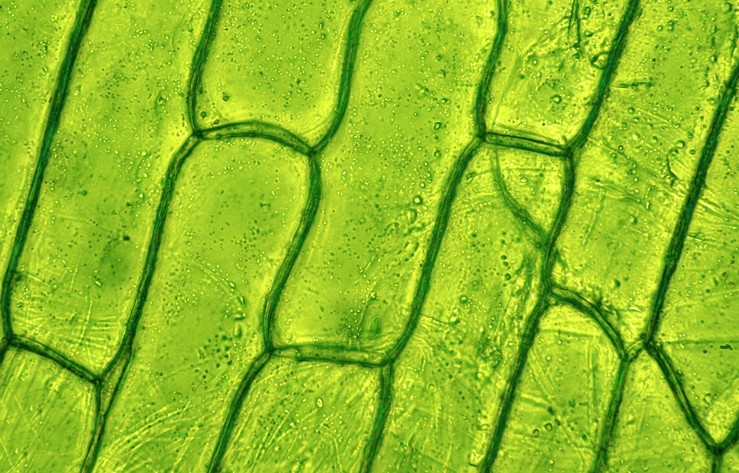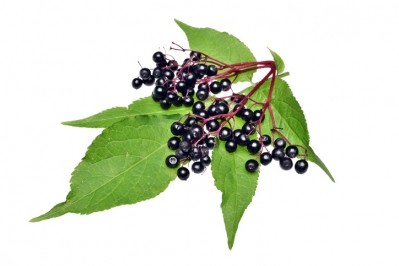Is plant cell culture technology finally ready for big time?

There is a renewed focus on the technology with the announcement that branded ingredient development firm Xsto Solutions will market an echinacea ingredient from plant cell culture in the United States. Branded as EccaTrue, the ingredient was developed by Italian company Active Botanicals Research. ABR’s Echinacea augustifolia extract is made via a cell culture process that yields a high concentration of the secondary metabolite echinoside.
Glittering vistas of technology’s promise
Plant cell culture technology theoretically could ensure consistent supplies of some ingredients that might be oversubscribed in today’s pandemic buying climate. Any sort of ingredient with even a tangential immune health support tie-in, like vitamin C, elderberry, Echinacea augustifolia and others, has been flying off the shelf. Echinacea itself is easily cultivated, so the supply concern there pertains mostly to this year’s growing season. But cell culture could be directed at ingredients from slower growing plants or ones whose wild populations are threatened by climate change, habitat destruction or over harvesting.
ABR has reportedly mastered this technology for the production of two other ingredients. One is an Ajuga reptans (a plant in the mint family commonly known by Bugle or Bugle herb as well as many other names) extract optimized for the content of a compound known as teupoliside. The other is an extract of Lippia citriadora (a verbena species) that is targeted toward its verbascoside content.
Xsto first announced the partnership in 2018, but now the ingredient is finally ready for market. It’s a rare foray into botanicals for Xsto, which in the past has concentrated on branded forms of minerals and vitamins like a no-flush form of niacin.
“We traditionally have not handled a lot of botanicals because of the lack of validation or the adulteration aspect,” said Dan Murray, Xsto’s vice president of product development.
But Murray said the new products have the reliability of a defined chemical process behind them. While that may not fit into what some advocates of botanical ingredients deem natural, it does make for lot to lot reliability in Murray’s view.
“We like this product because of its clean aspect,” he said. “I believe in chemical synthesis. It gives you a clean, known, pure product that you can duplicate every time.”
Murray said ABR has achieved Novel Foods status on the product in the EU and Xsto has completed a GRAS dossier on it for the US market.
The advantages of the technology are persuasive. Among the advantages often mentioned are:
- High sustainability with lower resources consumption such as water, soil and energy
- Scalability and flexibility of the production process
- Achievement of pure active molecules without contaminants
- Standardization and full traceability of the products
- Independence of the yield from climatic dynamics with consistent repeatability
ABR is hardly the first entrant into the field, said Stefan Gafner, PhD, chief science officer of the American Botanical Council.
“The tissue culture approach, which has been around for many years, certainly enables to produce a consistent extract based on the fact that clones of the same cell can be used in production. I agree that there is no impact of the weather, pollination, or other environmental aspects (e.g., pesticides, heavy metals, or other contaminants found in regular agricultural commodities) to worry about, and the supply is not dependent on the seasonal harvest of a plant, and can be scaled-up fairly quickly if there is a spike in demand. However, some of the ingredients used to grow these cells, or the elicitors, might end up in the extract if the process isn’t done carefully,” Gafner said.
“For medicinally used endangered plants, tissue culture may enable to produce an extract with the active metabolites without the need to negatively affect the wild population. The anticancer compound taxol, originally isolated from the bark of the Pacific yew (Taxus brevifolia), is an example of a molecule where the natural supply from the yew bark is not sustainable, and where many efforts have been made to obtain the compound from plant tissue cultures,” he added.
Difficulty of getting to finish line
Industry consultant Steve Hanson, CEO of the firm Grip Ideas, has collaborated on cell culture technology development in the past with Diana Plant Sciences. The company had developed an ingredient branded as Cocovanol, which consisted of bioactives from cocoa. This was meant to address the issue of the health promoting properties of cocoa and the unsuitability of chocolate as long term delivery mode. The technology was promising enough to have received an innovation award from Nutrition Business Journal in 2013 and another nod from Frost & Sullivan in 2014.
The Diana technology is now housed under the aegis of German flavor house Symrise as part of an acquisition a few years ago. To date no Diana ingredients have hit the market at commercial scale.
Hanson said that one of the interesting potential advantages of the technology is that is can achieve high degrees of traceability, purity and consistency without having to go to the full synthesis route. So there is still a connection to the plant source, and the genius of Mother Nature in designing the chemical pathway that produces the bioactives of interest.
“Plant cell culture technology focuses on the plant secondary metabolites that play a role in protecting the plant but not directly involved in the growth, development or reproduction of the plant. Many powerful compounds such as potent antioxidants classify as plant secondary metabolites and are excellent targets for plant cell culture technology. The process relies on what is naturally present in the plant and does not produce any compound that is not already part of the plant. Therefore, the plant cells produce the compounds of interest while retaining the complex nature of the whole plant cell,” Hanson said.
But it has been difficult for most developers to get to the finish line with the technology, Hanson said.
“The technology has been around for decades but it has been difficult to commercialize products due to lack of reproducibility, scalability, sensitivity and selectivity. An organization has to screen out and select the top producers from numerous cell lines. Then those cell lines need to be tested to find out if they can be produced on a viable commercial scale. Doing this requires specific equipment as well as very specialized scientific expertise,” he said.
Is a cell culture botanical really a botanical?
ABC founder and executive director Mark Blumenthal said his organization is agnostic about the source of a ‘botanical’ ingredient, and so does not have a position excluding cell culture materials from being considered on the same footing as ingredients that came from plants growing in the ground. Gafner, however, said there are some important considerations when looking at individual ingredients from this technology.
“For me, questions remain, for example how similar the extracts from tissue cultures are to those obtained from cultivated or wildcrafted herbs. Taking the example of echinacea, it is well-known that some of the molecules found in echinacea are due to the presence of fungal endophytes, i.e., fungi that live inside the echinacea plants. Therefore, it is likely that there are some differences among the two approaches to obtaining an extract. It is also questionable if none of the nutrients or elicitors make their way into the extract – so the claim “without contaminants” will need to be verified on a case-by-case basis. Another question I have is how the consumer will look at this. Based on past conversations, having an echinacea supplement that is made from echinacea cells grown in a bioreactor may not be everyone’s cup of tea,” Gafner said.
Murray said that transparency in labeling should address these concerns. If a marketer doesn’t pretend the ingredient is something it’s not, and it passes ID tests, what’s the concern?
“I would say that if you would send it to a lab and run an echinacea assay on it and it came out as echinacea, then I don’t think you have a beef,” he said.
















